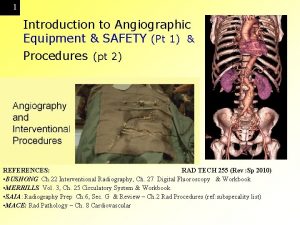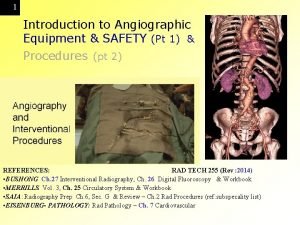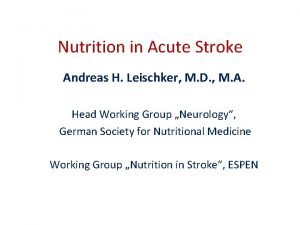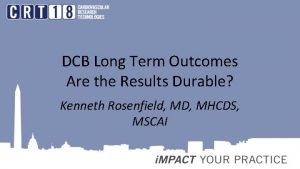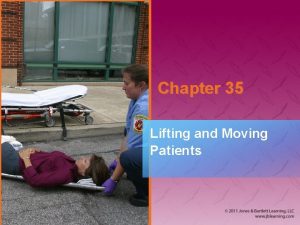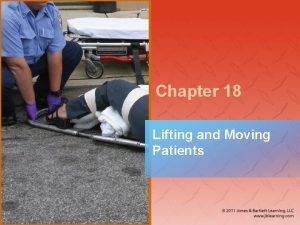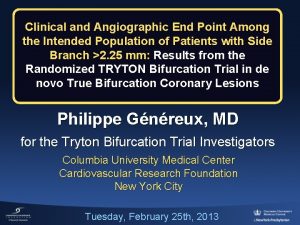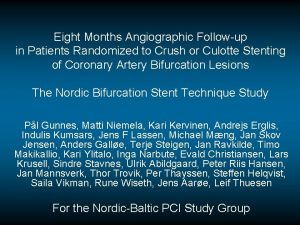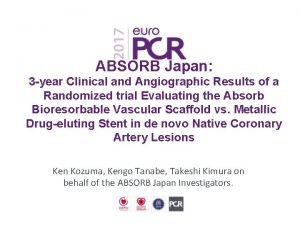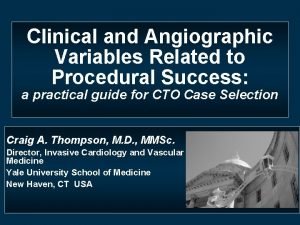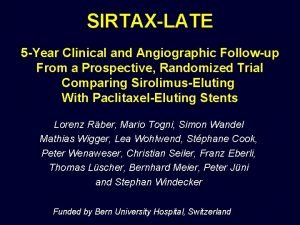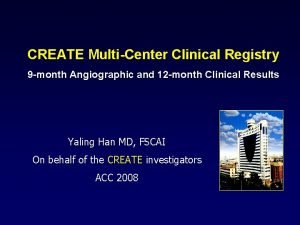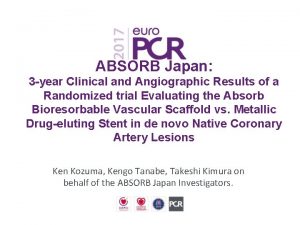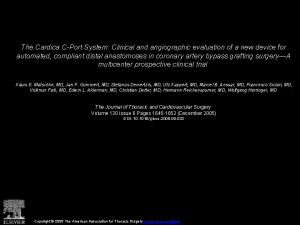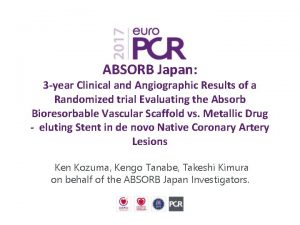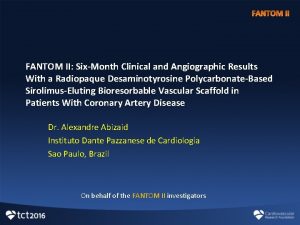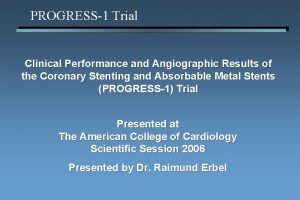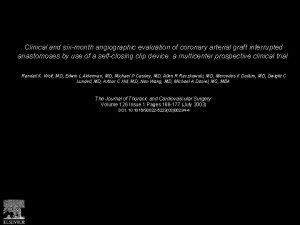Anterior Depressions Angiographic and Clinical Outcomes Among Patients


















- Slides: 18

Anterior Depressions Angiographic and Clinical Outcomes Among Patients with Acute Coronary Syndromes Presenting with Anterior ST-Segment Depressions C. Michael Gibson, Yuri B. Pride, Satishkumar Mohanavelu, Stephen D. Wiviott, Elliott M. Antman and Eugene Braunwald AHA Scientific Sessions 2008 New Orleans Disclosure Statement: TRITON-TIMI 38 was supported by a research grant to the Brigham and Women’s Hospital from Daiichi Sankyo and Eli Lilly. None of the individual authors has any relevant conflicts to report.

Anterior Depressions BACKGROUND • Rapid triage of patients with an acute coronary syndrome (ACS) to an appropriate pharmacologic and / or invasive strategy is associated with improved outcomes • The traditional 12 -lead electrocardiogram (ECG) is one diagnostic modality in the initial evaluation of patients with chest pain • The presence of ST-segment elevation is the key branch point in the triage to emergent reperfusion therapy

Anterior Depressions BACKGROUND Anterior ST-segment depressions Unstable angina or non-ST-segment elevation myocardial infarction Acute thrombotic occlusion in the posterior circulation Antiplatelet and antithrombotic therapy Risk stratification EMERGENT REPERFUSION THERAPY Conservative or early invasive strategy

Anterior Depressions GOALS • To determine the angiographic and clinical outcomes among patients presenting with ACS and isolated anterior ST-segment depression on 12 -lead ECG • To compare the clinician diagnosis of STEMI with subsequent angiographic evidence, such as an occluded culprit artery, and serologic evidence of myocardial necrosis • To determine the diagnostic ECG-to-PCI time among patients with an occluded culprit artery

Anterior Depressions MAIN TRIAL DESIGN Diagnostic ECG ACS (STEMI or UA/NSTEMI) & Planned PCI n=13, 608 Double-blind CLOPIDOGREL 300 mg LD/ 75 mg MD Angiography / PCI PRASUGREL 60 mg LD/ 10 mg MD Duration of therapy: 6 -15 months 1 o endpoint: CV death, MI, Stroke

Anterior Depressions METHODS • Patients with isolated anterior ST-segment depression were included in the analysis ØPatients with ST-segment elevation in other arterial territories were excluded • ECGs and angiograms were evaluated by local investigators

METHODS Anterior Depressions Anterior ST-segment depressions TFG 2/3 in culprit artery TFG 0/1 in culprit artery - Tn + Tn Unstable angina NSTEMI “STEMI”

Anterior Depressions METHODS • Outcomes Ø Composite of death or MI at 30 days Ø Fold elevation in cardiac biomarkers • As a surrogate for infarct size Ø Recognition of STEMI by local investigators Ø Time from diagnostic ECG to PCI

POPULATION Anterior Depressions 13, 608 patients enrolled in TRITON-TIMI 38 1, 198 patients with isolated anterior depressions 243 with UA (20. 2%) TFG 2/3 - Tn 641 with NSTEMI (53. 5%) TFG 2/3 + Tn 314 with “STEMI” (26. 2%) TFG 0/1 + Tn

BASELINE CHARACTERISTICS Anterior Depressions Characteristic Male “STEMI” (n=314) UA/NSTEMI (n=884) p-value 71% 65% 0. 054 62 63 0. 35 Diabetes 19% 22% 0. 15 Hypertension 60% 71% <0. 05 Hyperlipidemia 50% 54% 0. 072 Prior MI 15% 17% 0. 55 Smoker 33% 30% 0. 38 BMI, kg/m 2 (mean) 28 28 0. 86 Cr. Cl, ml/min (mean) 101 99 0. 45 Age, yrs (mean)

Anterior Depressions n=152 CULPRIT ARTERY IN “STEMI”* PATIENTS n=106 * TFG 0/1 in culprit artery Positive cardiac biomarkers n=56

Anterior Depressions CLINICAL OUTCOMES 30 -day death or MI 3 -way p=0. 006 n=243 n=641 n=314 TFG 2/3 - Tn TFG 2/3 + Tn TFG 0/1 + Tn

INFARCT SIZE Anterior Depressions p<0. 001 n=884 n=314

Anterior Depressions INFARCT SIZE BY CULPRIT ARTERY p<0. 05 for all

Anterior Depressions MANAGEMENT • Among patients with an occluded culprit artery and anterior ST-segment depression, only 14/314 (4. 5%) were interpreted by the investigator as a STEMI • The median time from baseline ECG to PCI for patients with an occluded culprit artery was 29. 4 hours (IQR 26. 1 -44. 1 hours) • None of the patients with an occluded artery had an ECG to PCI time <6 hours

Anterior Depressions LIMITATIONS • Only patients who survived until angiography were included ØDue to survival bias, this dataset may therefore underestimate the number of patients with anterior ST-segment depression who have an occluded artery • ECGs were read locally, not by a core laboratory, and so subtle ST-segment elevation cannot be excluded

Anterior Depressions CONCLUSIONS • More than a quarter of patients with ACS who present with isolated anterior STsegment depressions in TRITON-TIMI 38 had an occluded culprit artery and positive cardiac biomarkers • The occluded artery was most often the left circumflex artery

Anterior Depressions CONCLUSIONS • Patients with anterior ST-segment depression and an occluded culprit artery had significantly larger infarcts and worse short-term clinical outcomes • These ECG findings frequently went unrecognized as evidence of a possibly occluded culprit artery • This suggests the need for improved methods to identify patients with isolated anterior ST-segment depression who have an occluded artery
 Angiographic equipment
Angiographic equipment Equipment used in angiography
Equipment used in angiography Andreas leischker
Andreas leischker Dcb clinical outcomes
Dcb clinical outcomes Rubber scraper
Rubber scraper Ridge tracing and ridge counting
Ridge tracing and ridge counting Simplest tool for beating and stirring light mixtures
Simplest tool for beating and stirring light mixtures Emergency move vs rapid extrication
Emergency move vs rapid extrication Moving and handling dementia patients
Moving and handling dementia patients Rapid extrication technique emt
Rapid extrication technique emt Rothberg position
Rothberg position Patients rights and responsibilities
Patients rights and responsibilities Define inadequate
Define inadequate Medicare improvements for patients and providers act
Medicare improvements for patients and providers act Wheeled ambulance stretcher
Wheeled ambulance stretcher Short backboards are usually used to
Short backboards are usually used to Collaborative interventions nursing
Collaborative interventions nursing Example of learning objectives
Example of learning objectives Goals and expected outcomes
Goals and expected outcomes
